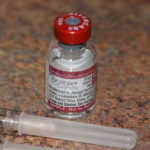The basic cause of acne is due to the skin’s sebaceous glands which overproduce too much oil (sebum) into the skin’s pores. Sebum not only clogs the pores but it also serves as a source of nutrients for bacteria. When enough bacteria multiply, the pores become inflamed and a pimple is formed. Botox is theorized to be helpful for control of acne by blocking the chemical acetylcholine in the skin’s dermis. Acetylcholine helps stimulate the skin’s sebum production. By reducing sebum production, acne breakouts will be less. In addition, Botox paralyzes the little muscles that surround the skin’s pore which makes them expand, thus shrinking pore size.
Injecting small amounts of Botox into the skin is technically difficult. The thickness of most facial skin is around 1mm or so. The injections need to be just into this layer and not deeper, otherwise it will not work. If it is injected past the dermis, facial muscles may be paralyzed and could alter one’s facial expressions.
 The only published medical study on the effects of Botox on acne appeared in the August 2008 issue of the Journal of Drugs in Dermatology entitled ‘Use of Intradermal Botulinum Toxin to Reduce Sebum Production and Facial Pore Size.’ This paper reported in the experience in twenty patients which showed that seventeen of them had a significant reduction in their breakouts one month after being injected. While the study size was small and the follow-up brief, these preliminary results were encouraging. It should be cautioned, however, that this form of acne treatment isn’t for everyone It’s use be for patients over 20-years-old who have more stable hormonal levels.
The only published medical study on the effects of Botox on acne appeared in the August 2008 issue of the Journal of Drugs in Dermatology entitled ‘Use of Intradermal Botulinum Toxin to Reduce Sebum Production and Facial Pore Size.’ This paper reported in the experience in twenty patients which showed that seventeen of them had a significant reduction in their breakouts one month after being injected. While the study size was small and the follow-up brief, these preliminary results were encouraging. It should be cautioned, however, that this form of acne treatment isn’t for everyone It’s use be for patients over 20-years-old who have more stable hormonal levels.Botox remains an interesting and relatively cost-effective treatment for refractory adult acne cases. It should be pointed out that this is an off-label, non-FDA approved use of Botox and most of the supportive evidence is anectodal. I have yet to see a published prospective controlled clinical study that evaluates its effects in a larger number of patients with longer follow-up. But the concept is theoretically appealing and it seems to have no significant risks.
Dr. Barry Eppley
Indianapolis, Indiana


